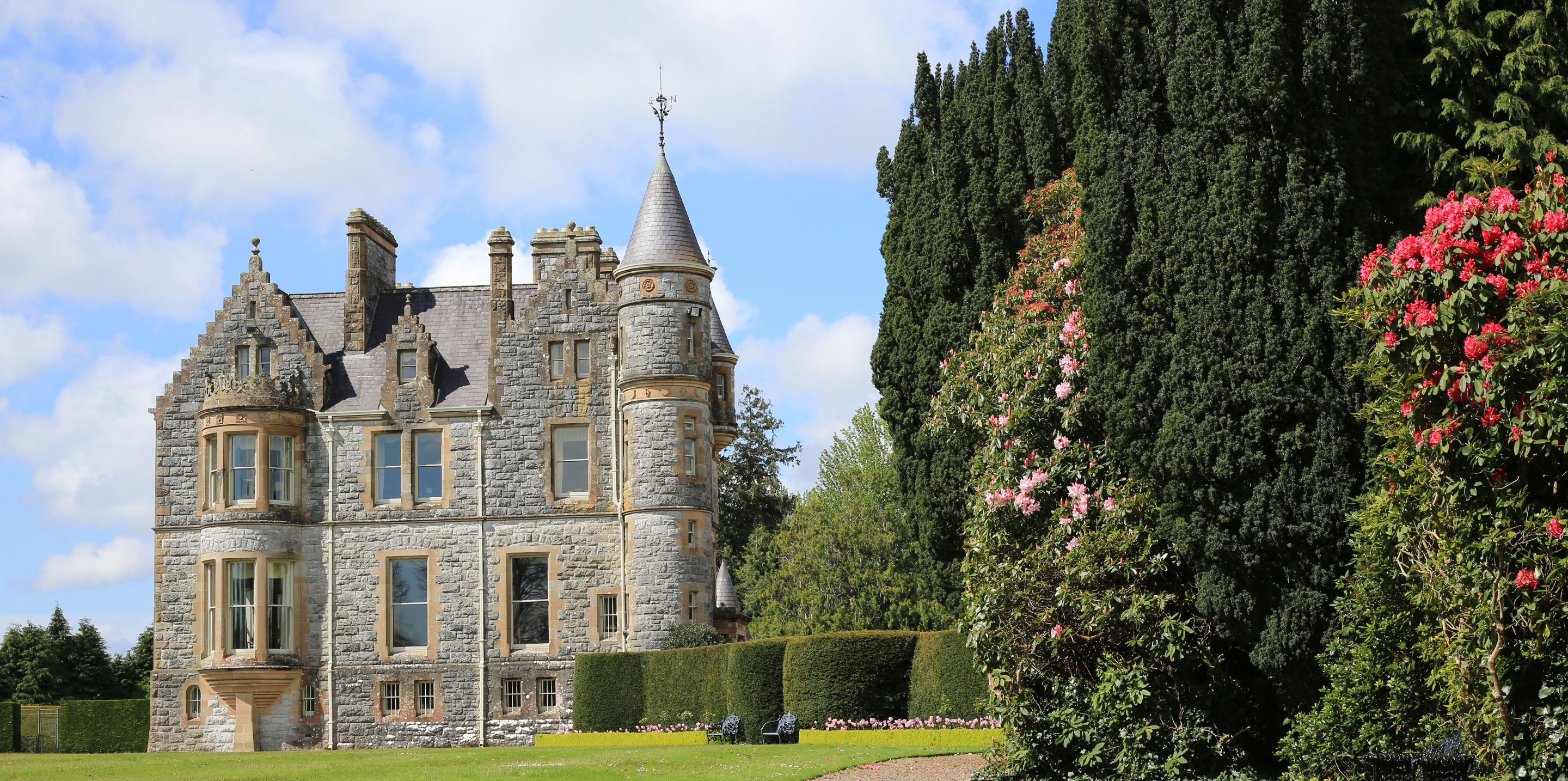Blarney House
The Blarney estate, near the town of that name in County Cork, is renowned for its castle, an unusually large and well preserved tower-house of 1446 which incorporates the famous Blarney Stone, set into the masonry high up beneath the battlements. In former times visitors were lowered over the parapet to kiss ‘The Stone’ while gripped firmly by the ankles but the process has become far easier and safer today. In return they are rewarded with ‘the gift of eloquence’ which has made Blarney a renowned and popular tourist destination since the days of Queen Victoria.
Blarney was the seat of the MacCarthy family, who obtained the title Earls of Clancarty under a system of Anglicisation known as ‘Surrender and Regrant’ where Irish chieftains surrendered to the crown and were handed back their lands and rewarded with positions and titles.
Unfortunately, Donagh, the 4th Earl of Clancarty, chose to support King James II and was attainted at the end of the Williamite wars. His vast estates were forfeit and granted to the Hollow Sword Blades Company, a forerunner of the disastrously speculative South Sea Company that was attempting to break the Bank of England’s monopoly over Government loans. Daniel Defoe described its three directors as ‘the very triumvirate of thievery’.
In 1704 the mayor of Cork, Sir James St John Jefferyes, purchased the estate and built a new house attached to the castle. The building was greatly enlarged by his descendants and developed into large Georgian Gothic house with a central bow, rows of pointed ‘lancet’ windows and pinnacled battlements. In 1820 this building was destroyed by fire and not rebuilt, though part of its remains can still be seen today.
In 1846 Louisa Jane, the Jefferyes heiress, married a neighbour, Sir George Colthurst of Ardrum near Inniscarra. In addition to being her cousin, Colthurst was a man of considerable property with another large estate at Ballyvourney near the border with County Kerry, along with Lucan House in County Dublin. He also inherited Blarney on his father-in-law’s death.
When her first children died, Lady Colthurst demanded to be given a new house at Blarney on an elevated site. This was built in the Scots Baronial style by Sir Thomas Lanyon of Belfast who, rather surprisingly, incorporated a number of classical details from the recently demolished Ardrum into the design. Their very high quality shows that Ardrum was an extremely important building, about which nothing is known today.
Otherwise, the new Blarney House is typical of its type, with pinnacles, crow-stepped gables and a profusion of turrets with conical roofs. The interior has a double height inner hall, lit from above, a pair of interconnecting drawing rooms and a massive oak staircase. The decoration varies in style from neo-Jacobean to Adam Revival and the rooms have tall plate-glass windows which overlook the lake.
Nearby, the Jefferyes family created the unique Rock Close, an early eighteenth century druidic garden layout of large rocks, boulders and yew trees with dolmens, a stone circle and a druid’s altar.
Today Blarney House is the home of Sir Charles Colthurst who has expanded and enhanced the gardens and maintains the estate in an exemplary manner.
Address & Contact
Blarney House, Blarney Castle Estate, Blarney, Corkt: +353 21 4385252
f: +353 21 4381518
Houses and Garden
Individual House Visits
Groups by Arrangement
Individual Garden Visitors


